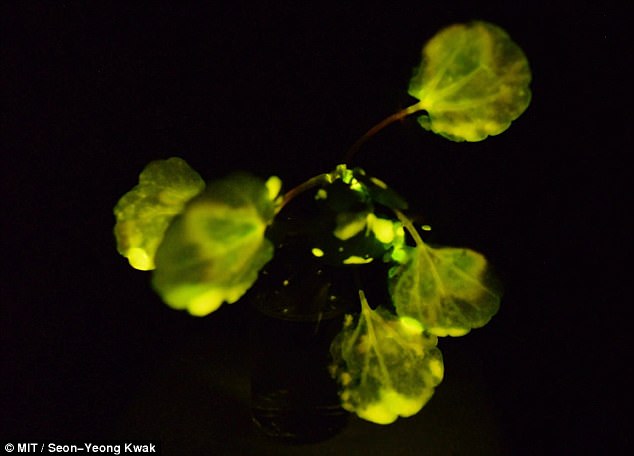MIT Just Created Living Plants That Glow Like A Lamp, And Could Grow Glowing Trees To Replace Streetlights
Roads of the
future could be lit by glowing trees instead of streetlamps, thanks to a
breakthrough in creating bioluminescent plants. Experts injected specialized
nanoparticles into the leaves of a watercress plant, which caused it to give
off a dim light for nearly four hours. This could solve lots of problems.
The chemical
involved, which produced enough light to read a book by, is the same as is used
by fireflies to create their characteristic shine. To create their glowing
plants, engineers from the Massachusetts Institute of Technology (MIT) turned
to an enzyme called luciferase. Luciferase acts on a molecule called luciferin,
causing it to emit light.
Roads of the
future could be lit by glowing trees instead of streetlamps, thanks to a
breakthrough in creating bioluminescent plants. Experts created a watercress
plant which caused it to glow for nearly four hours and gave off enough light
to illuminate this book
Another
molecule called Co-enzyme A helps the process along by removing a reaction
byproduct that can inhibit luciferase activity. The MIT team packaged each of
these components into a different type of nanoparticle carrier.
The
nanoparticles help them to get to the right part of the plant and also prevent
them from building to concentrations that could be toxic to the plants. The
result was a watercress plant that functioned like a desk lamp.
Researchers
believe with further tweaking, the technology could also be used to provide
lights bright enough to illuminate a workspace or even an entire street, as
well as low-intensity indoor lighting.
Michael
Strano, professor of chemical engineering at MIT and the senior author of the
study, said: 'The vision is to make a plant that will function as a desk lamp —
a lamp that you don't have to plug in. The light is ultimately powered by the
energy metabolism of the plant itself. Our work very seriously opens up the
doorway to streetlamps that are nothing but treated trees, and to indirect
lighting around homes.'
The full
findings of the study were published in the American Chemical Society journal
Nano Letters. What do you think about this development?
You can read
the complete article here.



Comments
Post a Comment